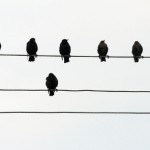It all depends of the engine and the pilot.
Almost all airplanes are capable of taking a 360-degree roll or making a loop, but not all of them can fly upside down for very long, as doing so requires an extremely potent engine, a skilled pilot and a special wing profile. For example, if the wing is flat-bottomed with a considerable curve on the top side, the aircraft is not suited for flying upside down.
A noninverted airplane stays aloft because the wind meets its wings at what is called the angle of attack at great speed. At this angle, the necessary lift is generated; if an aircraft is to fly upside down, the pilot must see to it that the wind meets the wings at the right angle in this position as well. The plane must also be constructed so that the supply of oil and fuel does not stop, and it must fly at a speed guaranteeing that it doesn’t stall.
Got a burning science question?
Send us your questions to letters@scienceillustrated.com.au. If we publish the answer on our website or in the next issue of Science Illustrated you could win amazing prices!








carlos
December 30, 2011
surely, if the plane is upside down, and the angle of attack is correct, the lift will actually be propelling the plane in the same direction as gravity???
However, having seen planes fly upside down, it seems that the simple explanation of ‘lift’ does not explain the phenomenon observed.